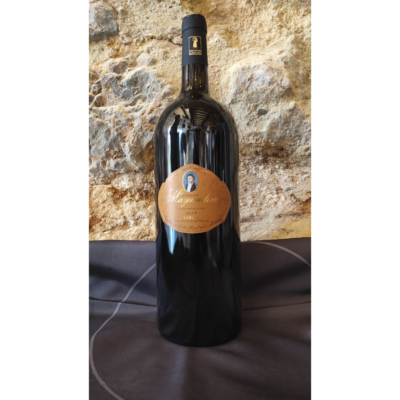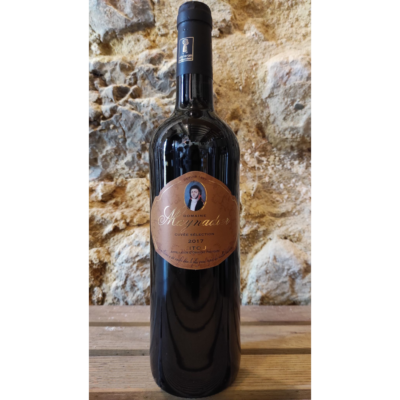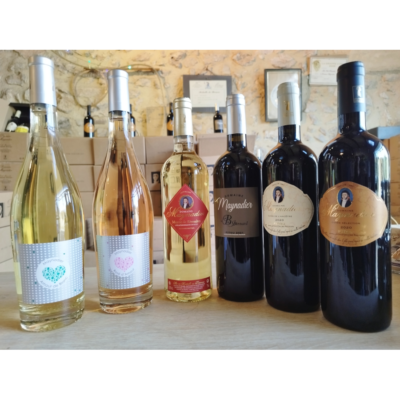There were already vines in Fitou in 400 BC and the wine was of such quality that it was already exported to Italy and Spain. Over the centuries, our societies have organised themselves, created standards and labels which led to the AOC Fitou in 1948. How did we go from a wine packaged in amphorae and transported in ox carts to a renowned wine, whose label proving the AOC is authoritative?
Prehistory of the AOC
Official labels for wine only came into being in the 20th century, due to the great wine crises that shook the profession at the very beginning of the century. In 1907, these crises led to an uprising of winegrowers who demanded the organisation of the profession, along with protection against deception and fraud. With the industrial revolution and the advent of the railways, goods moved much more easily and much faster, but fraud also increased sharply.
In 1919, a new law was enacted to allow legal action to be taken against a merchant claiming an appellation without the product conforming to the origin and “local, loyal and constant uses” of the appellation. In practice, the “uses” will be limited to the sole notion of “terroir” following case law. Nevertheless, this is the beginning of the AOC and the protection of wine producers.

In the 1920s, the first cooperative wineries appeared to face up to the wine crisis. It is necessary to look back at the context of the time and remember that the wines were not labelled. They were sold in bulk to merchants. Only they can make the connection between the producer, his terroir and the quality of his wine, unlike their customers who drink wines without knowing their origin.
The history of the Institut National des Appellations d’Origine – INAO
Birth in 1935
We owe to Joseph Capus – senator of the Gironde between 1930 and 1940 and Minister of Agriculture for a few months in 1924 – a decree-law published on 31 July 1935, which deals with “the defence of the wine market and the economic regime of alcohol”. A new concept was born: the Appellation d’Origine Contrôlée – the AOC – managed by the Comité National des Appellations d’Origine for wines and eaux-de-vie.
The original and unprecedented principle establishes a governance of the “Comité National des Appellations d’Origine” which associates the professionals of the wine industry and the State administrations. This is a guarantee of the impartiality of the system which overcomes the disputes and disagreements between winegrowers and merchants.
The post-war period
The concept evolved after the Second World War with the creation of regional interprofessions. Alcohols were associated with the Regulated Designations of Origin – the AORs – and the obligation of quality control through tasting was introduced.
On the death of the founding president Joseph Capus, the new president, Baron Le Roy de Boiseaumarié, took over and finalised the creation of the Institut National des Appellations d’Origine – INAO.
The success of the AOC concept extended to products other than wine and, in 1948, the first “Congress of Origin” held in Deauville brought together not only wines and eaux-de-vie but also cheeses and Bresse poultry.
This is the first sign of the extension of the AOC system to all agricultural and agri-food production.

Expanding the name internationally
Baron Le Roy now wanted to make his concept known beyond our borders and to this end created the International Organisation of Vine and Wine – the OIV – which he chaired for more than fifteen years.
His perseverance led to the signing of the Agreement in Lisbon in 1958. Its 27 member countries, all of whom are committed to the protection of appellations of origin, still meet there today.
The INAO of the 1960s
The INAO continued to evolve, gaining in competence and reputation. In the 1960s, questions began to be asked about its role in guaranteeing quality.
Thanks to a constant dialogue with the European Commission, the defence of AOCs is based on their recognition in Europe and even beyond the borders of Europe. French AOC wines enjoy solid protection within the European Community.
The INAO since the 1990s
In 1990, the INAO’s remit included agricultural and agri-food products, Protected Geographical Indications – PGIs – and forestry products.
In 2006, the INAO became the Institut National de L’Origine et de la Qualité (National Institute of Origin and Quality) and its competence extends to official quality labels: AOC/AOP, IGP, Organic Agriculture, Label Rouge, STG.
In 2009, he added Vins de Pays, now PGI wines, to his area of expertise.
The INAO – one of the oldest agricultural organisations in France – is over 80 years old today. It is proof of the permanence of the objective that French agriculture has set itself: to have an exemplary quality policy.

The Fitou AOC
At the beginning of the 20th century, the fact that the wines were sold in bulk and were not labelled with the name of their producer prevented them from becoming known to the general public.
In 1935, when Joseph Capus had just launched the concept of the AOC, the winegrowers of Fitou, Caves, Leucate, La Palme and Treilles launched an application for AOC recognition for red wines. They have created the “Comité de défense pour les vins de Fitou” for this purpose.
The Second World War imposed a long interlude in this process but, at the end of the war, the defence committee not only resumed its struggle but added to its membership the villages of the high cantons: Tuchan, Paziols, Villeneuve and Cascastel.
In 1947, a delegation from the INAO – which had just been created – began studying the possibility of a Fitou appellation. The process succeeded thanks to the quality of the wine and the know-how passed down from generation to generation.
Decree of 28 April 1948
On 28 April 1948, the Fitou AOC was officially recognised by decree.




